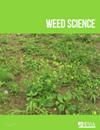Black-grass (Alopecurus myosuroides) in cereal multispectral detection by UAV
IF 2.1
2区 农林科学
Q2 AGRONOMY
引用次数: 0
Abstract
Site-specific weed management (on the scale of a few meters or less) has the potential to greatly reduce pesticide use and its associated environmental and economic costs. A prerequisite for site-specific weed management is the availability of accurate maps of the weed population that can be generated quickly and cheaply. Improvements and cost reductions in unmanned aerial vehicles (UAVs) and camera technology mean these tools are now readily available for agricultural use. We used UAVs to collect aerial images captured in both RGB and multispectral formats of twelve cereal fields (wheat (Triticum aestivum L.) and barley (Hordeum vulgare L.)) across eastern England. This data was used to train machine learning models to generate prediction maps of black-grass (Alopecurus myosuroides Huds.) locations, a prolific weed in UK cereal fields. We tested machine learning and data set resampling methods to obtain the most accurate system for predicting the presence and absence of weeds in new out-of-sample fields. The accuracy of the system in predicting the absence of A. myosuroides is 69% and its presence above 5g in weight with 77% accuracy in new out-of-sample fields. This system generates prediction maps that can be used by either agricultural machinery or autonomous robotic platforms for precision weed management. Improvements to the accuracy can be made by increasing the number of fields and samples in the data set and the length of time over which data is collected to gather data over the whole growing season.无人机在谷物多光谱探测中的黑草
针对特定地点的杂草管理(几米或几米以下的规模)有可能大大减少农药的使用及其相关的环境和经济成本。特定地点杂草管理的先决条件是能够快速、廉价地生成准确的杂草种群地图。无人机和摄像头技术的改进和成本降低意味着这些工具现在可以很容易地用于农业。我们使用无人机收集了以RGB和多光谱格式拍摄的英格兰东部12块麦田(小麦(Triticum aestivum L.)和大麦(Hordeum vulgare L.))的航空图像。这些数据被用于训练机器学习模型,以生成黑草(Alopecurus myosuroides Huds.)位置的预测图,黑草是英国麦田中一种多产的杂草。我们测试了机器学习和数据集重采样方法,以获得最准确的系统来预测新的样本外田地中杂草的存在和不存在。该系统在预测是否存在拟肌孢子虫方面的准确率为69%,在新的样本外字段中,其存在重量超过5g,准确率为77%。该系统生成预测图,可供农业机械或自主机器人平台用于精确的杂草管理。可以通过增加数据集中的字段和样本数量以及收集数据以收集整个生长季节的数据的时间长度来提高准确性。
本文章由计算机程序翻译,如有差异,请以英文原文为准。
求助全文
约1分钟内获得全文
求助全文
来源期刊

Weed Science
农林科学-农艺学
CiteScore
4.60
自引率
12.00%
发文量
64
审稿时长
12-24 weeks
期刊介绍:
Weed Science publishes original research and scholarship in the form of peer-reviewed articles focused on fundamental research directly related to all aspects of weed science in agricultural systems. Topics for Weed Science include:
- the biology and ecology of weeds in agricultural, forestry, aquatic, turf, recreational, rights-of-way and other settings, genetics of weeds
- herbicide resistance, chemistry, biochemistry, physiology and molecular action of herbicides and plant growth regulators used to manage undesirable vegetation
- ecology of cropping and other agricultural systems as they relate to weed management
- biological and ecological aspects of weed control tools including biological agents, and herbicide resistant crops
- effect of weed management on soil, air and water.
 求助内容:
求助内容: 应助结果提醒方式:
应助结果提醒方式:


